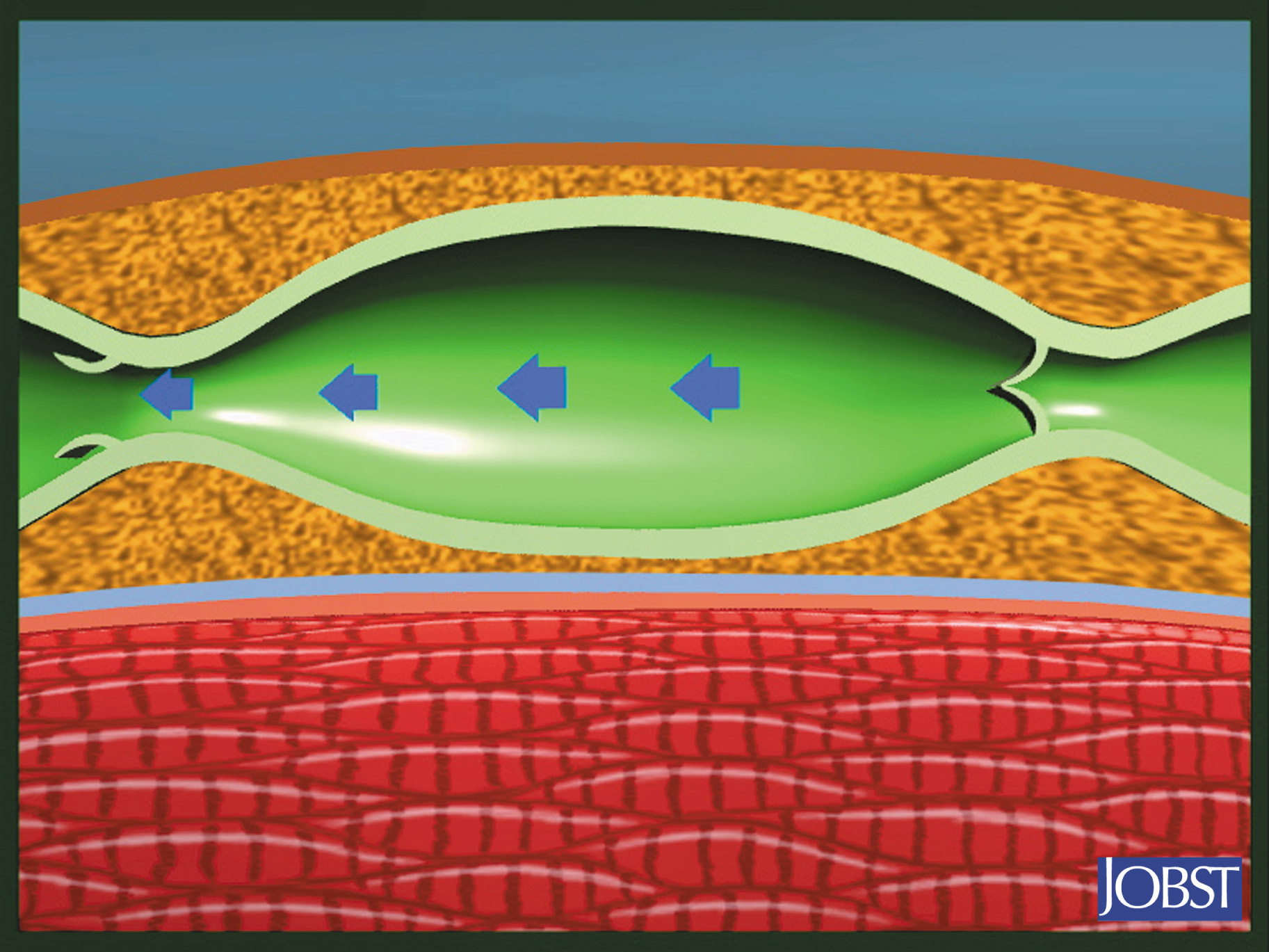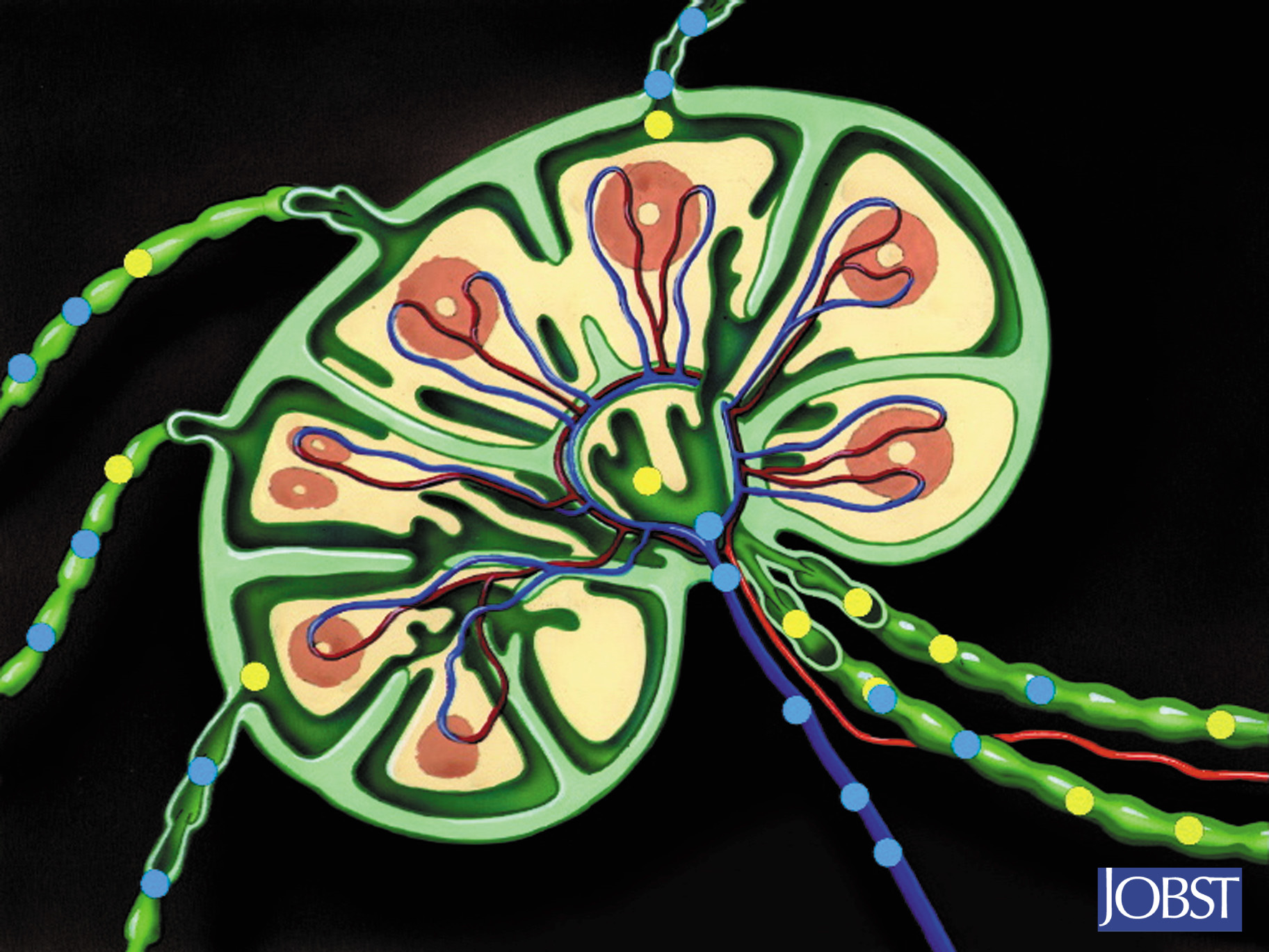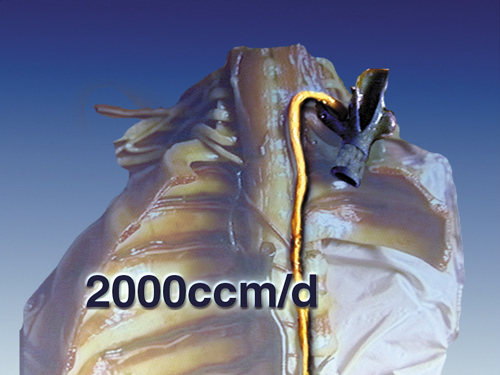Under normal conditions, the human body pumps about two liters of lymph fluid every day. Disruption to the lymphatic system impairs its ability to drain fluid properly, resulting in excess fluid accumulation.
Anatomy of the Lymphatic System
The lymphatic system is responsible for the production, transport and filtration of lymph fluid throughout the body. In addition to its important circulatory functions, the lymphatic system also has important immunological functions.
The network of lymph vessels is divided into:
- Capillaries
- Pre-collectors
- Collectors
- Trunks
 The lymph capillaries form the beginning of the lymphatic system. Here, large molecules (proteins) and interstitial fluid are absorbed and flow towards the pre-collectors, which channel the lymph fluid into the larger collectors.
The lymph capillaries form the beginning of the lymphatic system. Here, large molecules (proteins) and interstitial fluid are absorbed and flow towards the pre-collectors, which channel the lymph fluid into the larger collectors.
 The collectors have valves similar to veins which determine the direction of flow. The lymph collector segment bordered by a distal and proximal valve is known as a lymphangion. Here, the lymph flow is supported by intrinsic contractions of the lymphangion which is regulated by the sympathetic nervous system and lymph volume.
The collectors have valves similar to veins which determine the direction of flow. The lymph collector segment bordered by a distal and proximal valve is known as a lymphangion. Here, the lymph flow is supported by intrinsic contractions of the lymphangion which is regulated by the sympathetic nervous system and lymph volume.
Lymph transport is also facilitated by several extrinsic factors:
- Breathing (diaphragm)
- Muscle contractions
- Vasomotion (pulsation of arteries)
- Negative pressure in central veins
- External compression:
- Manual lymphatic drainage
- Short stretch bandages
- Gradient compression garments
 On its way into the circulatory system, lymph passes through lymph nodes, which are stationed throughout the body. While the axilla and inguinal areas are the most well known for lymph nodes, the head and neck also contain a large quantity, as do the intestines.
On its way into the circulatory system, lymph passes through lymph nodes, which are stationed throughout the body. While the axilla and inguinal areas are the most well known for lymph nodes, the head and neck also contain a large quantity, as do the intestines.
The main functions of the lymph nodes are:
- Filter bacteria, toxins and dead cells
- Produce lymphocytes for fighting infection
- Regulate protein concentration in lymph
 Finally, the lymphatic fluid is returned to the circulatory system throughout the major lymphatic trunks, such as the thoracic duct. Approximately two liters of lymph flow into the blood circulation every day.
Finally, the lymphatic fluid is returned to the circulatory system throughout the major lymphatic trunks, such as the thoracic duct. Approximately two liters of lymph flow into the blood circulation every day.
Learn More About Lymphedema
To find out more about how lymphedema impacts the body, or to learn more about how compression therapy can help make the disorder’s symptoms more manageable, contact JOBST and speak with a member of our team.
Breast cancer is one of the leading risk factors for lymphedema. There are nearly 3 million women in the U.S. with a history of breast cancer.
Source: Surveillance, Epidemiology, and End Results Program – National Cancer Institute



